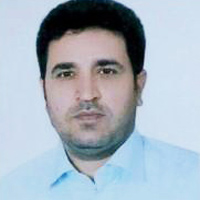Identifying and explaining the most important ways to improve agricultural higher education in Zanjan Agricultural College
The higher education system, as the most obvious manifestation of human resource investment, plays a key role in training and providing effective human resources. So The development of higher education is very important as one of the infrastructures of the development of any country. In this regard, the development of agricultural higher education can play an important role in the growth of agriculture and guarantee the achievement of comprehensive and sustainable development of agriculture. The main purpose of this research was to identify the most important and the pillars ways to improve agricultural higher education. Due to the exploratory approach, qualitative approach was used to identify the solutions. The statistical population of the research was university experts, graduates, agricultural entrepreneurs and managers of agricultural jihad, and 32 experts were interviewed using purposeful sampling until reaching the threshold of usefulness. Agriculture has been used in Zanjan province. By analyzing the text of the interviews, 200 conceptual propositions related to the purpose of the research were extracted during open coding.These concepts were classified in the form of 52 sub-categories during axial coding and then in 6 general categories during selective coding. According to this classification, the most important aspects of improving the agricultural higher education system include educational-research, infrastructure, structural (infrastructure), individual-skill (human resources), administrative-management (organizational) and economic aspects.
-
Identifying the consequences of water reduction in Zanjan township from the perspective of farmers
Vahid Mohammadi *,
Water Engineering, -
The Influence Factors of Farmers' Adaptive Behavior in Kermanshah Province Under Water Scarcity Conditions: The Role of Risk Perception and Self-efficacy in the Theory of Planned Behavior
Yousof Azadi, *, Heydar Gholizadeh, Saeed Gholamrezai, Fatemeh Rahimi-Feyzabad
Journal of Geography and Environmental Hazards,



